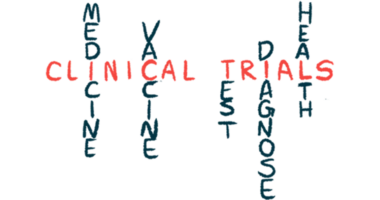Long-term Rebinyn Can Safely Prevent Bleeds in Children With Severe Hemophilia B, Trial Shows

Long-term treatment with Rebinyn (nonacog beta pegol, or N9-GP) is safe and effective at preventing and treating spontaneous bleeds in previously treated children, 12 or younger, with severe hemophilia B, five-year data from a Phase 3 trial show.
The findings were reported in a study, “Long-Term Safety and Efficacy of Nonacog Beta Pegol (N9-GP) Administered for at Least 5 Years in Previously Treated Children with Hemophilia B,” published in the journal Thrombosis and Haemostasis.
People with hemophilia B are lacking a clotting factor called factor IX (FIX). Standard treatments for hemophilia B are based on providing the missing FIX to patients prophylactically, or as a preventive measure to avoid spontaneous bleeding episodes, which is known as replacement therapy.
Rebinyn, marketed under the brand name Refixia in the European Union, is an approved FIX replacement therapy developed by Novo Nordisk for adults and children with hemophilia B.
An open-label Phase 3 trial (NCT01467427) called Paradigm 5 was launched in 2012 to assess the safety and efficacy of Rebinyn in preventing spontaneous bleeding episodes in previously treated boys, 12 or younger, with severe hemophilia B (with FIX activity up to 2%). The medication was given intravenously (directly into the bloodstream) once-a-week at a dose of 40 international units/kg.
The trial included a one-year main phase, followed by a 10-year extension phase, which is still ongoing.
An interim analysis of one-year data showed that the treatment was safe and effective. Now, investigators have reported safety and efficacy results at five years, which were compared to the previously released results.
From the 25 boys initially enrolled, 24 completed the main phase of the study, and 22 entered the study’s extension.
At the five-year cutoff date (Oct. 1, 2018), 17 children were still participating in the study, and eight had discontinued treatment.
During a median treatment period of 5.6 years, children were exposed to Rebinyn for a median of 290 days and received a median 279 injections.
Safety analyses revealed that none of the patients developed neutralizing antibodies (inhibitors) against the artificial FIX, which would have rendered Rebinyn useless.
In addition, no other safety concerns, including thromboembolic events (blood clots that block blood flow), were observed in any of the children.
Efficacy analyses revealed that 64% of the participants did not experience any bleeding episodes.
Spontaneous bleeds observed during the trial were all mild or moderate in severity, and 93% were rapidly controlled with one or two injections of Rebinyn.
Bleeds happened in joints in 42.5% of the cases, followed by muscles (19.5%), and skin (16.8%). No brain hemorrhages were reported.
Additional analyses showed that the median annualized bleeding rates (the median number of bleeds during a year) decreased from 1 at one year to 0.66 at five years. After five years, the mean FIX trough (minimal) activity had increased to 17.9%.
“The data from this 5-year analysis of Paradigm 5 substantiate the long-term safety and efficacy of N9-GP [Rebinyn] for the prevention and treatment of bleeds in previously treated children (aged 0–12 years) with hemophilia B,” the researchers wrote.






